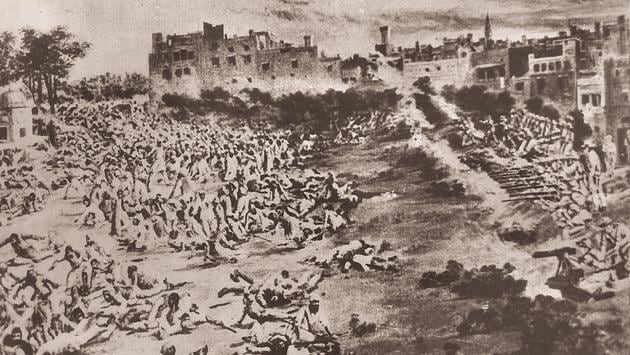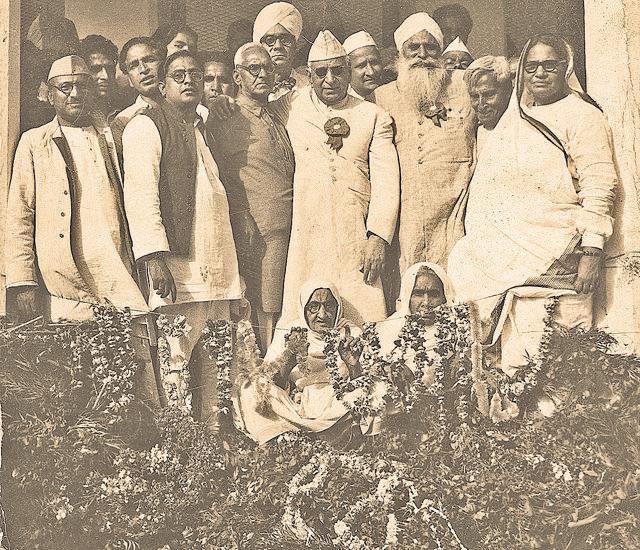Part 1 | Revisiting Jallianwala 100 years on: Bloodbath on Baisakhi, the massacre that shook the British Raj
As we step into 100th year of the Jallianwala Bagh massacre, HT looks back at the tragedy that proved to be the turning point in the freedom struggle, and signified the beginning of the end of the British Empire in India.
April 13, 1919, was not just another Baisakhi day in Amritsar. The violence that claimed 25 lives three days earlier (April 10) was still fresh on people’s minds.

On Baisakhi, a Sunday, the festivities were muted and the streets were quiet, but the Golden Temple was flush with devotees. As the day wore on, the nearby Jallianwala Bagh, a quadrangle with a well, surrounded by tall houses and two narrow passages, began to fill up with people, many of whom had been to the Golden Temple and Mall Mandi, famous for its animal fair.
Many locals trickled in after hearing an announcement by Baalo, a halwai and town crier, on the evening of April 12. He asked people to join a meeting at the Jallianwala Bagh at 4pm on Baisakhi. Its agenda: to protest the arrest of Dr Satyapal and Dr Saifuddin Kitchlew, who had been opposing the Rowlatt Act.
On Sunday, while some people listened keenly to the speakers slamming the Rowlatt Act as “no vakeel, no daleel, no appeal”— the law that let the government arrest and detain people without warrant and trial — others sat around in groups, eating langar being served by volunteers. Around 10 leaders, including Dr Harbkash Rai and Abdul Aziz, had already spoken and Braj Gopinath Be-akal, a poet, was reciting, “Afsar-e-aala ne hum ko aaj di hai dhamkiyaan, ki baaju kaat denge hum. Par har khizaan ke baad mausamein bahaar laajmi hai (The officer-in-chief has today issued us a warning, threatening to cut our arms off … But remember if you cut a tree, it will bloom again).”
Suddenly, there was some hullabaloo at the margins. The first gunshots were greeted with cries of “phokiyaan, phokiyaan (these are empties),” but all hell broke loose when blood-spattered people started falling to the ground.

Darbari Lal, 78, a former professor of history and a three-time legislator from Amritsar, says no one knows the exact time of the firing that lasted 10 minutes. “When I came to the city as a refugee in 1947, all that people remembered was the night of terror that followed.” His friend late Swaran Singh, principal of Sant Singh Sukha Singh School on Mall Road, a boy at that time, told him about the horror of being trapped under the dead. The British put the number of dead at 376 — records of the then British Punjab Government digitised by Punjab Digital Library, an NGO led by Davinder Pal Singh, a mathematician-turned-historian, show the youngest was Sohn Lal, 9, and the oldest Nathu, 80 — though Madan Mohan Malviya of the Indian National Congress put the toll at 1,000. There were many who lost a limb to gangrene. Among them was Lakshmi Chand, a wealthy businessman, whose leg was amputated.
A city on the brink
It had been quite a tumultuous April for the city of 150,000 people. First on April 6, the city observed a complete lockdown against the Rowlatt Act. On April 9, it celebrated Ram Navmi with a procession led by Dr Hafiz Mohd Bashir. “It was for the first time that it was fronted by a Muslim,” claims Darbari Lal. Deputy Commissioner Miles Irving, he says, sent a telegram to then Punjab Governor Gen Michael O’ Dwyer, saying ‘they have united’ following which the police arrested Dr Satyapal and Dr Kitchlew on April 10 morning, and packed them off to Dharamshala in Himachal.
The news spread like wildfire, and protesters gathered at Hall Bazar, famous for its lassi and kulfi, to march up to the DC’s residence. In the melee that ensued, police opened fire and shot down 20 people. The enraged crowd then took the bodies in a procession and set fire to British banks, killing the Alliance Bank manager Thomson who opened fire. The European manager and accountant of National Bank also fell to the mob fury as did a British sergeant at Rigo Bridge and a guard named Robinson.
Marcella Sherwood, a missionary who had been teaching in Amritsar for 15 years, was pedaling back from school when a mob chased and hit her with sticks. She was rescued by some locals, who took her to Fort Gobindgarh, which was turned into an army camp at night.
Col H E N Dyer, 55, who was then holding the temporary rank of a Brigadier General, was summoned from the Jalandhar cantonment to Amritsar on April 11. A day later, Gen Dwyer imposed martial law in Lahore and Amritsar, but the orders reached the city only a day after Baisakhi. On the morning of April 13, Dyer’s troops marched through the city while town criers announced that any assembly of four people would be dispersed with force. But people at the Jallianwala Bagh hadn’t heard these announcements.

Enraged upon hearing about the crowd at Jallianwala, Dyer marched into the garden with a column of 50 soldiers — a mix of Gorkha and Baluchi troops armed with .303, Lee Enfield and bolt action rifles, and ordered them to open fire. They fired a total of 1,650 rounds before marching back. They used up every single bullet they had even as the crowd had begun to disperse as soon as the firing began. Dyer directed them to aim and fire for maximum damage. Later, he said he would have used the machine guns had the two armoured cars been able to enter the garden. There was no warning.
Among those who managed to escape was 21-year-old Udham Singh, an orphan raised at Putlighar in the holy city. Twenty-one years later, on March 13, 1940, Udham, who had close association with Bhagat Singh’s Hindustan Socialist Republican Association, shot Michael O’ Dwyer at Caxton Hall in London. He finally redeemed the vow he had taken on April 13, 1919: to avenge the massacre. A carnage he never forgot or forgave.
Read Part 2 here



